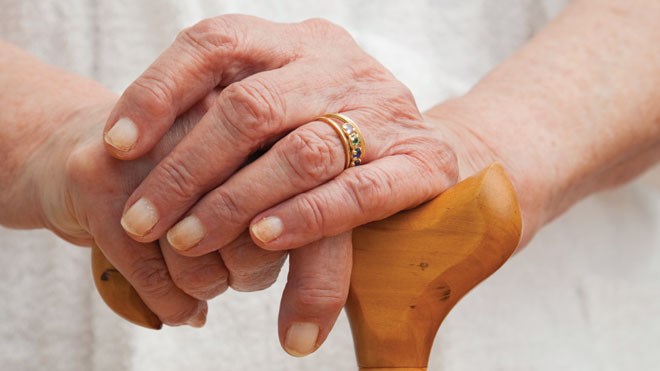Gélinas said the numbers show that for Ontario, at least, actions taken by Mike Harris' Progressive Conservative government in the 1990s and early 2000s, to privatize home care services, have taken their toll.
She said the system in place today diverts too much funding to administration and not enough to the front lines.
“We need a complete change in our home care system,” Gélinas said. “What we have now is failing us. What we have now is broken.”
According to an August 2014 analysis of the North East Community Care Access Centre (CCAC) by the Hay Group Health Care Consulting, the organization was too top-heavy.
“While other CCACs have reduced or minimally increased their management and operational support FTEs (full-time equivalents), the NE CCAC has seen the largest growth in this category of staff in the province this year, and for the last three years,” the analysis said.
“NE CCAC has added new programs that other CCACs have not added, but have not increased the number of patients being served to the same degree that other CCACs in Ontario have.”
Terry Tilleczek, the North East Local Health Integration Network's senior director of policy and planning, said the Statistics Canada study was concerning, but added a lot of progress has been made to improve home care services in northeastern Ontario.
“We're bringing more services to the northeast than we were two years ago even,” he said.
Tilleczek said the Priority Assistance to Transition Home, or PATH program, has helped 1,200 seniors transition from hospital care to their homes in the past 18 months.
The North East LHIN, Tilleczek said, has built in more capacity to co-ordinate care for the elderly, who often receive care from their family doctors and a number of specialists.
New investments in telehomecare, he said, have allowed 900 people in the North East LHIN's coverage area to remain in contact with their care providers, even in remote regions.
The Statistics Canada study found that fewer than 290,000 of the people who had their home care needs unmet did not ask for help from a family member or an organization.
Tilleczek said programs like Health Care Connect, which connects individuals with family physicians, can help ensure marginalized people, especially individuals with lower incomes and recent immigrants, can receive the home care they need.
In northeastern Ontario, it is expected the percentage of older adults will increase to 30 per cent of the population by 2036. Within the next 10 years, one in every four residents will be aged 65 or older.
That demographic change means more people will have chronic conditions, and choose to receive their care at home.
The health care system, Tilleczek said, will need to manage resources efficiently and link more services to meet the growing demand.
Sturgeon Falls resident Irene Olivier said she was pleased with her recent experience with the home care system.
“It was extremely positive,” she said. “It was unbelievable how good they were to us.”
Olivier's husband, Leonard, was diagnosed with ALS in December 2013 and died at home on June 24, 2014.
During his last week Leonard lost all mobility and could no longer communicate.
Olivier said a team of personal support workers, and a nurse practitioner visited their home three times per day to care for her husband.
“They were all here to help, which was great,” Olivier said.
But unlike many of the 290,000 Canadians who did not ask for help from family members or organizations to receive the home care they needed, Leonard had his family to advocate on his behalf.
While she was pleased with the service her husband received from the North East Community Care Access Centre and Red Cross Care Partners, which employed his personal support workers, Olivier said she had to advocate for Leonard early on.
The first week they received home care service Olivier said she was not happy with one of her personal support workers.
“I called them and they changed him right away,” she said. “You need to be on top of that.”
Join Sudbury.com+
- Messages
- Post a Listing
- Your Listings
- Your Profile
- Your Subscriptions
- Your Likes
- Your Business
- Support Local News
- Payment History
Sudbury.com+ members
Already a +member?
Not a +member?
Sign up for a Sudbury.com+ account for instant access to upcoming contests, local offers, auctions and so much more.
